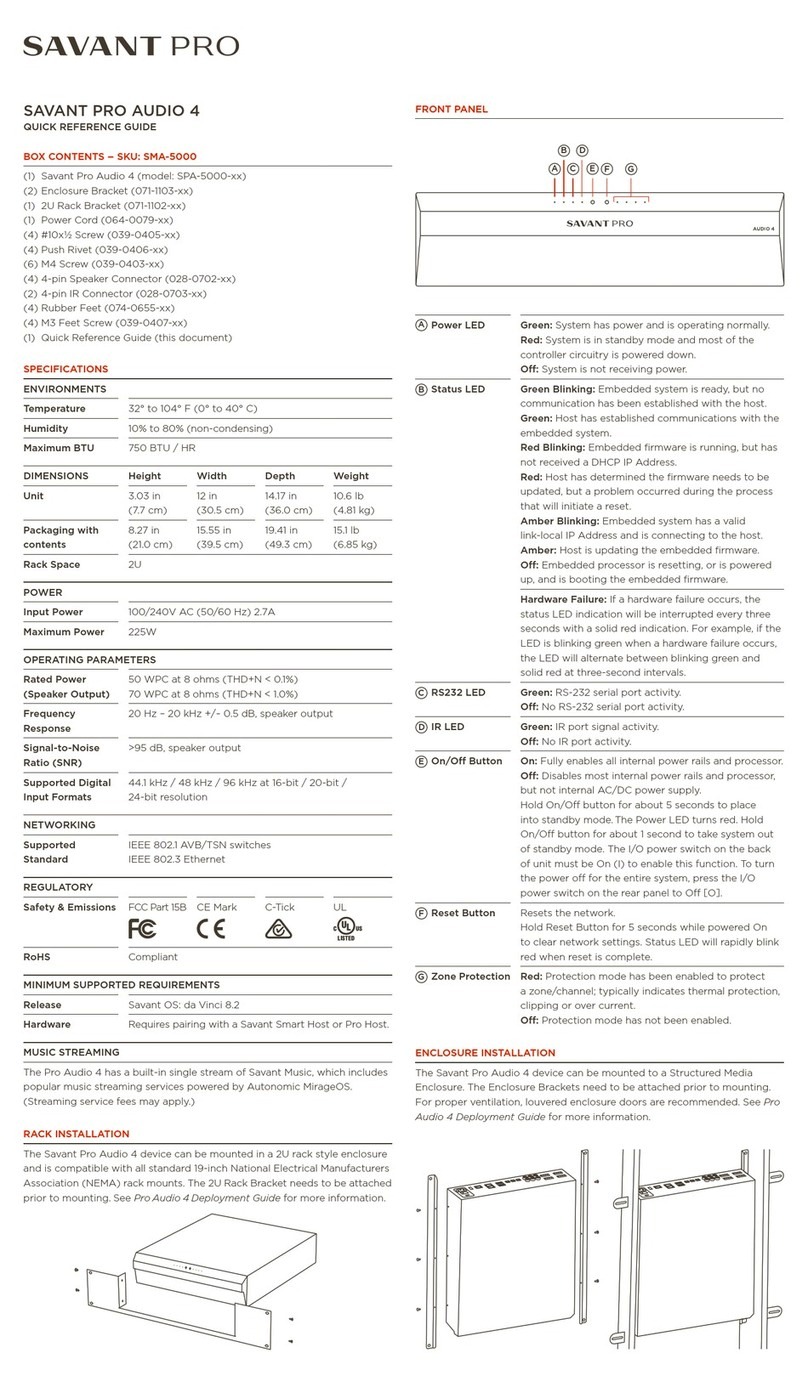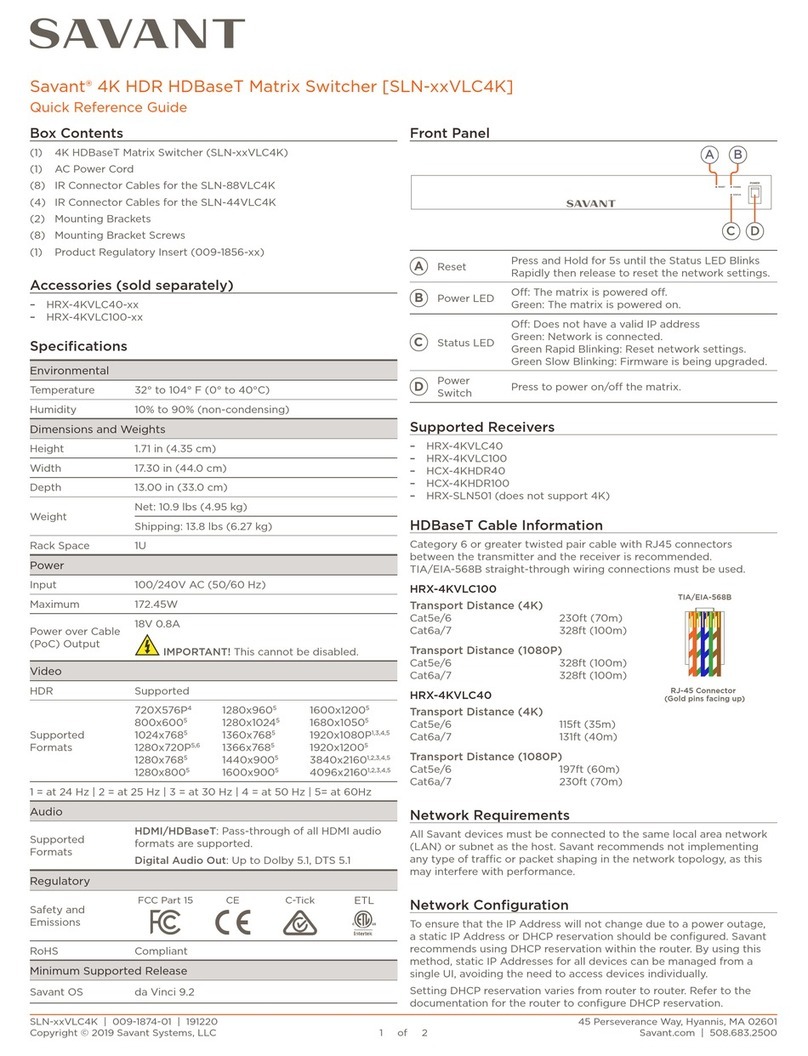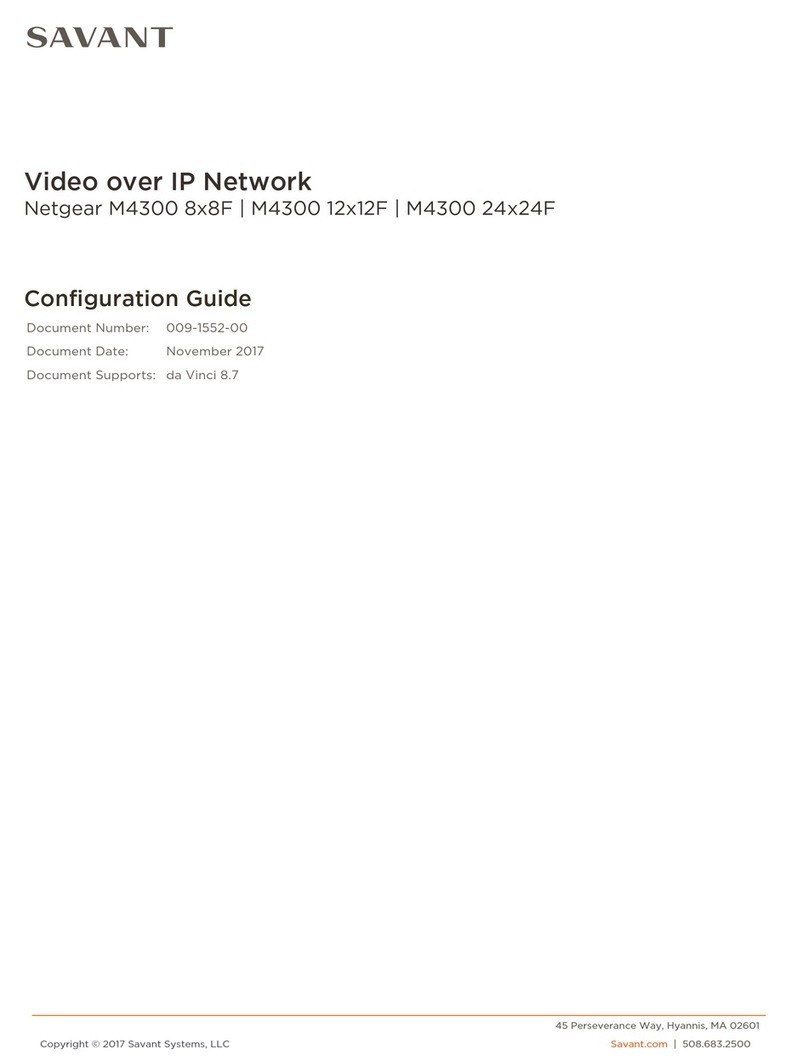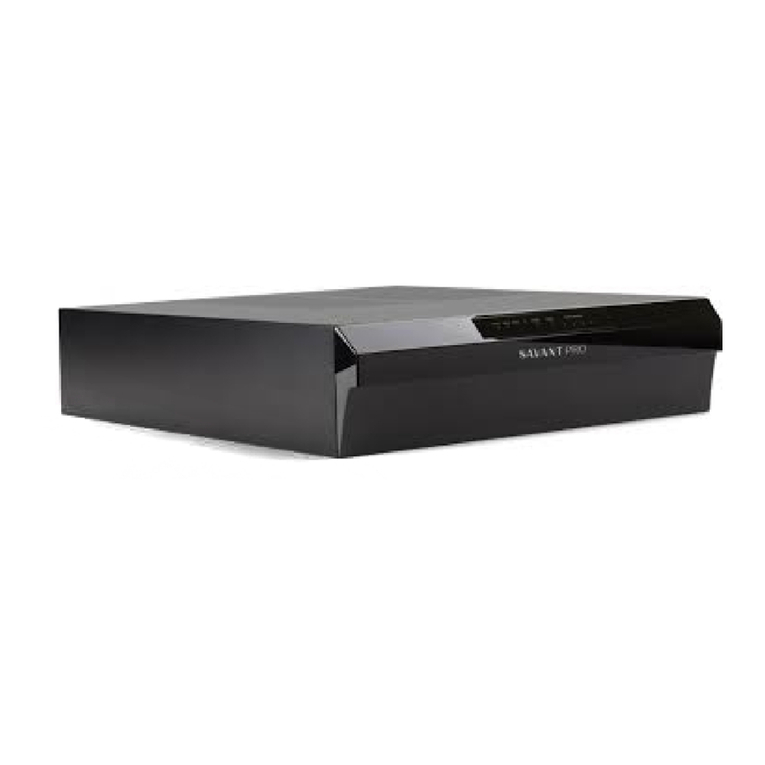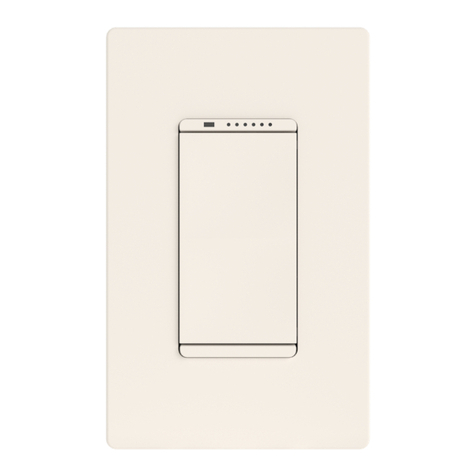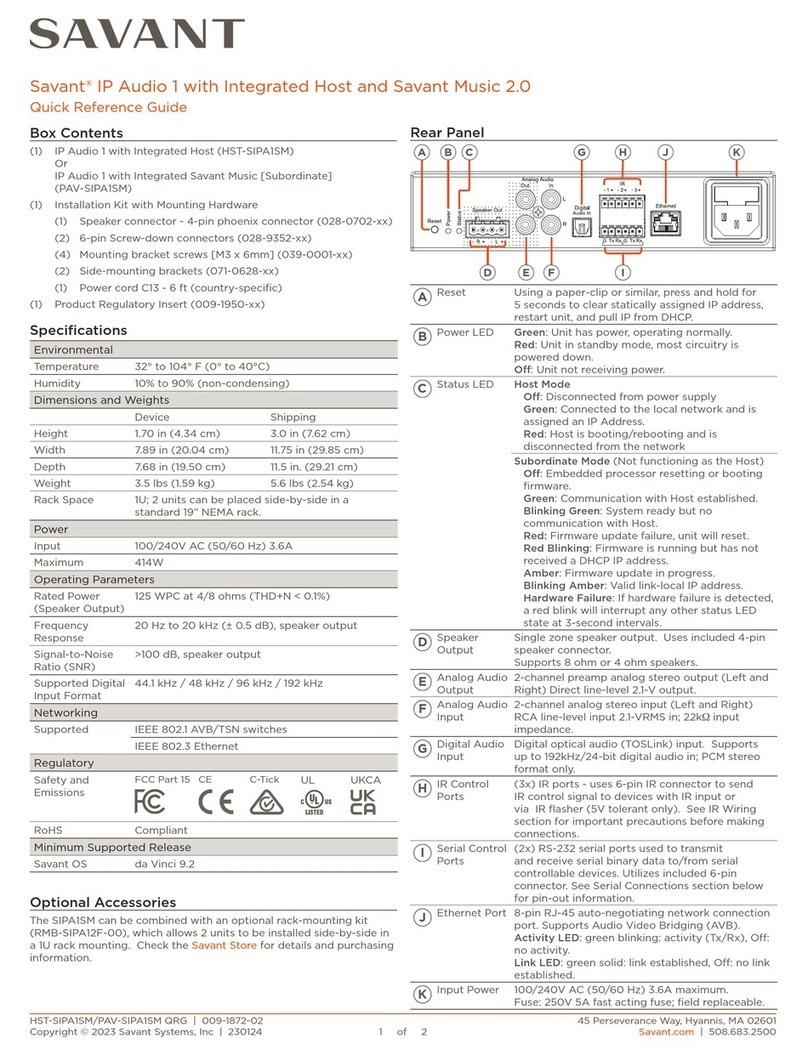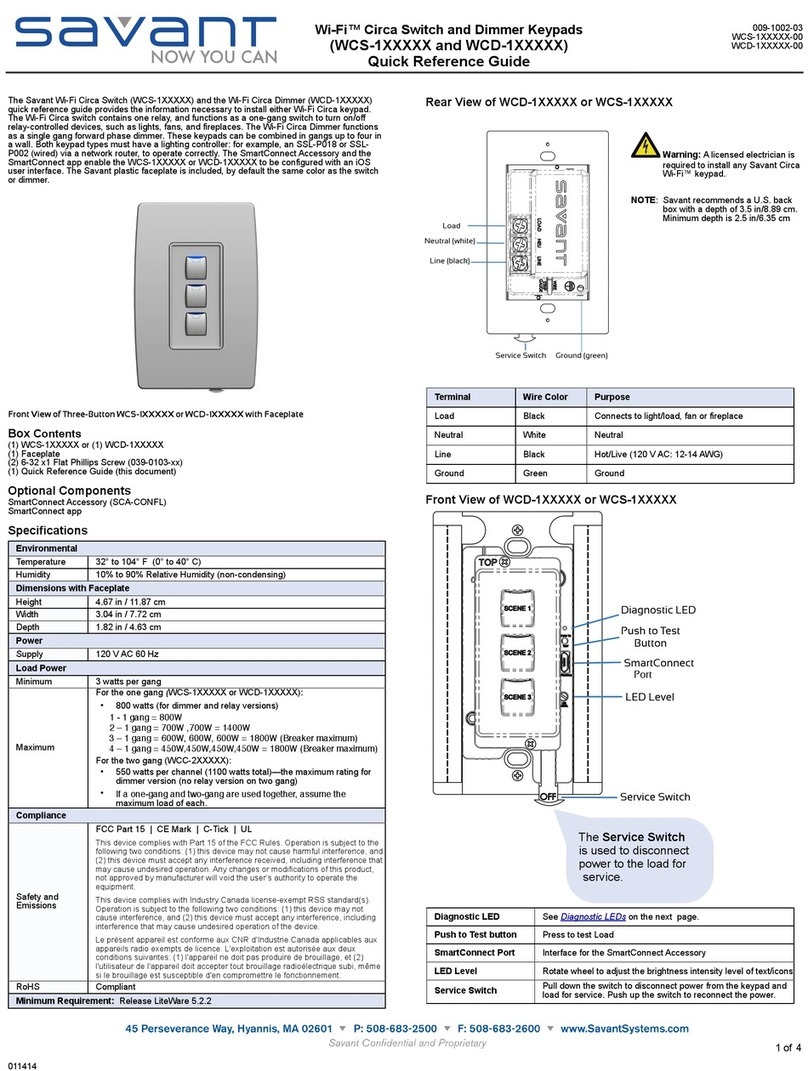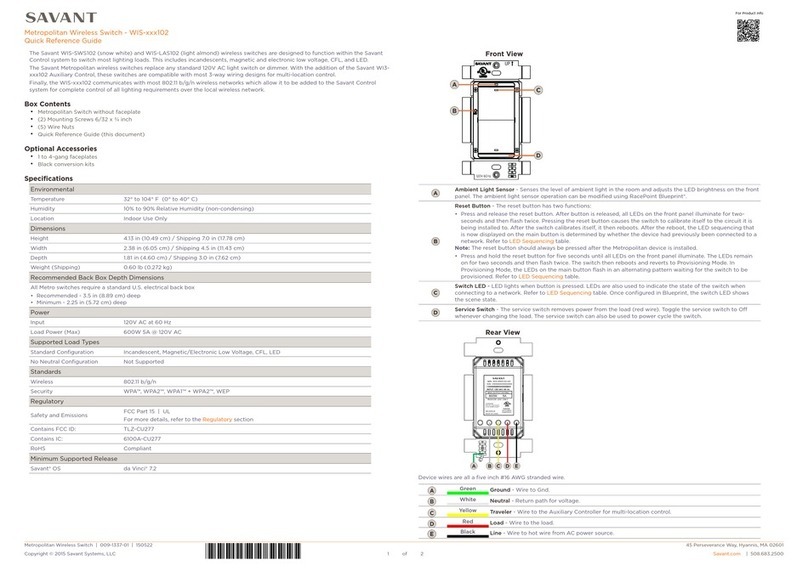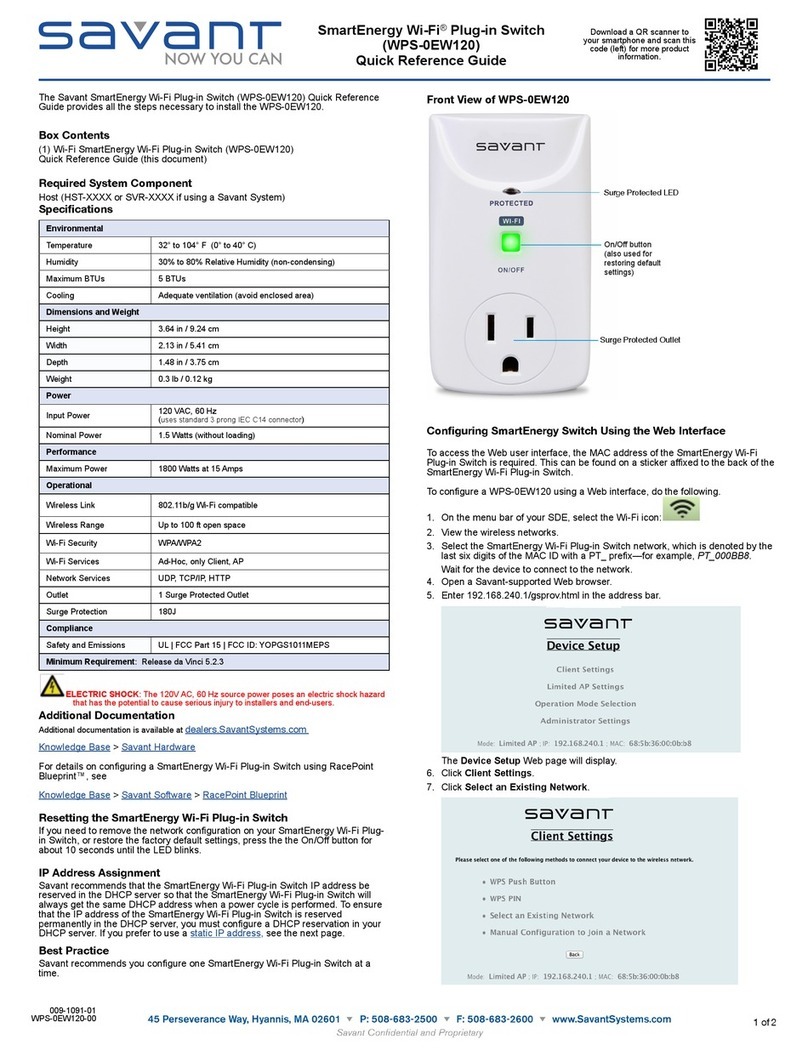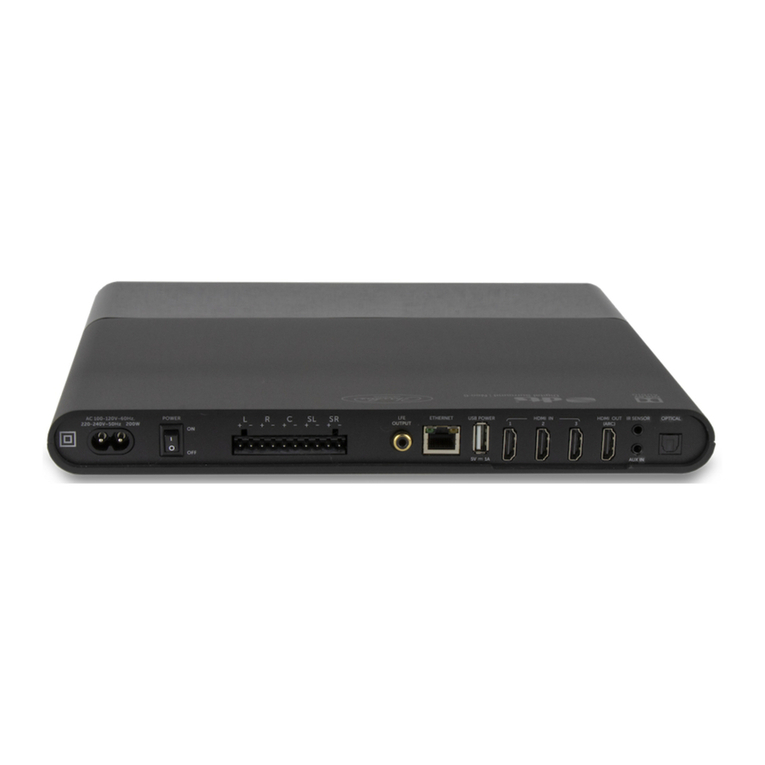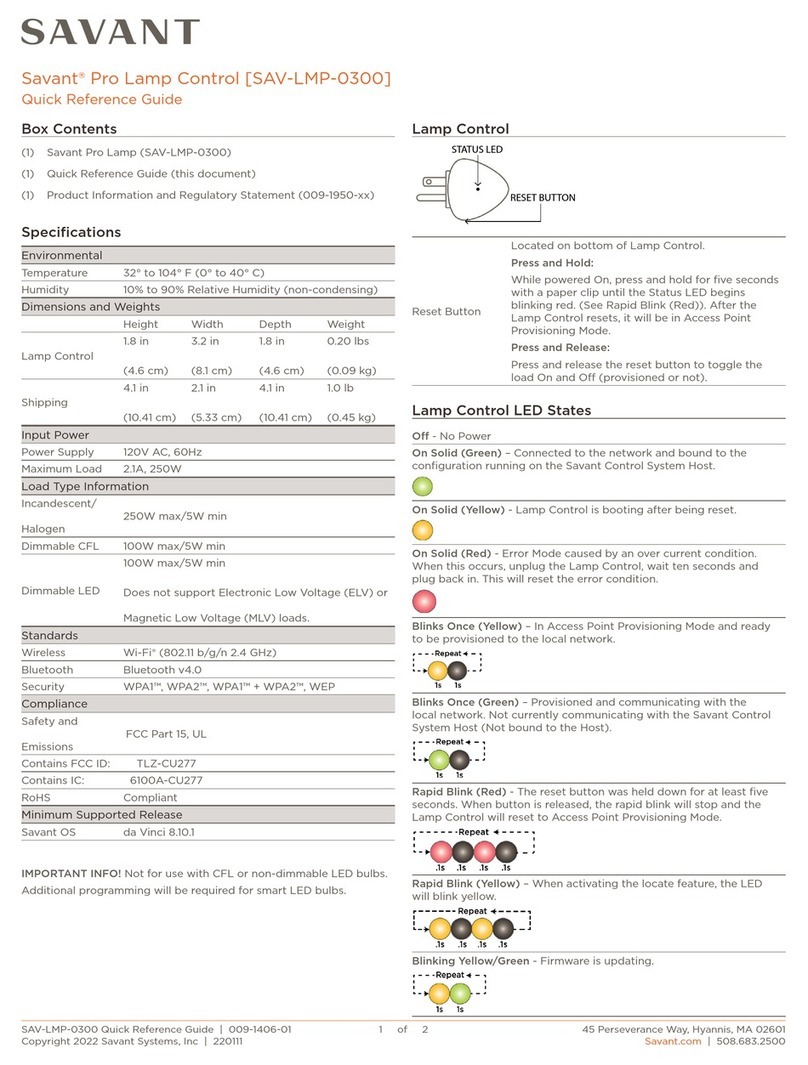
Echo Wireless Switches 3 of 4 Copyright © 2018 Savant Systems, LLC
009-1758-03 | 190603
Echo Wireless Switches 2 of 4 Copyright © 2018 Savant Systems, LLC
009-1758-03 | 190603
Hardware Overview
Front Panel
Rear Panel
AAmbient Light Sensor - Detects the level of ambient light in the room and adjusts the LED brightness on the front panel. The
ambient light sensor operation is modified using RacePoint Blueprint®.
B
Dimming Level - Six indicator LEDs track the brightness of the load. LEDs turn on from left to right as intensity on load
increases and turns o from right to left as intensity decreases. Once configured in Blueprint, the LEDs track the brightness of
the scene created.
C
Reset Button - The reset button has two functions:
–Press and release the reset button. After button is released, all LEDs on the front panel will cycle through red, green, blue
and white.
–Press and hold the reset button for five-seconds until all LEDs on the front panel illuminate. The LEDs will remain on for
two-seconds and then flash twice. The switch then reboots and reverts to Provisioning Mode. In Provisioning mode, the
LEDs on the main button now flash in an alternating pattern waiting to be provisioned. Refer to the LED Sequencing table.
DButton LED - LED lights when button is pressed. LEDs are also used to indicate the state of the switch when connecting
switch to a network. Refer to the LED Sequencing table. Once configured in Blueprint, the Switch LED shows the scene state.
EService Switch - The service switch disconnects power from the load (red wire). Toggle the service switch to O whenever
changing the load. The service switch can also be used to power cycle the switch.
Yellow Traveler - Wire to one or more Auxiliary Controls for multi-location control.
BGreen Ground - Wire to Gnd.
CWhite Neutral - Return path for voltage.
DBlack Line - Wire to hot from AC power source.
ERed Load -Wire to the load.
WPB-xxS106 WPS-xxS102 WPK-xxS105
Device wires are all a five inch #16 AWG stranded wire.
EDC
BA
A B
C
E
AB
CD
E
A
B
C
D
E
Electrician Removal/Installation
ELECTRIC SHOCK! The 120V AC, 60 Hz source power poses an electrical shock hazard that has the potential to cause serious
injury to installers and end users.
IMPORTANT NOTES!
–A licensed electrician is required to install any of the Echo wireless lighting devices. Isolate and turn o power at the main
breaker panel prior to installing any electrical devices.
–For supply, neutral, and ground connections use only #14 AWG or larger solid copper wires (80°C) with insulation stripped
to ⅝ in (16 mm).
1. At the main breaker panel, switch the breaker that supplies power to the dimmer or switch being replaced to O.
2. Unscrew the wall plate and remove. Verify power is removed using a 120V AC tester.
3. Unscrew the two 6-32 flat head screws and remove the existing toggle/rocker switch or analog dimmer.
4. Disconnect wires from the existing device and remove the device. It is good practice to label each wire as it is removed. If not
already identified, mark each wire to ensure proper rewiring. Especially if the circuit employs a 3-way configuration.
5. Connect the in-wall wires to the leads coming from the Echo wireless switch using the supplied wire nuts or approved
alternative. Refer to the Wiring Diagrams and Rear View Descriptions sections for more information.
6. Insert the switch into the electrical switch box and secure using the 6-32 flat head screws provided. DO NOT use a powered
screw driver. A powered screw driver can over tighten the screws.
7. Install front faceplate wall plate adapter. 8. From the main breaker panel, switch the breaker that supplies
power to the switch to On.
–All LEDs will cycle through red, green, blue, and white.
–Next, the LEDs on the main button will blink several times in
sync.
–From there, the same LEDs on the main button will blink. Refer
to the LED Sequencing table.
NOTE: Install the wall adapter to cover the metal yoke prior to
applying power. If replacing an Echo style device, remove
power before removing the wall plate adapter.
NOTE: Pressing any button on the front panel after the blinking has stopped will begin a new cycle period.
Three dimming LEDs
alternate red left to right
.5s
.5s
Keypad is in AP Mode and needs to be provisioned. After a short time (up to one minute), the
blinking will stop. In this state, the keypad is still in AP Mode. The blinking stopped intentionally
for cases where the device is not provisioned onto the network and can be used as a manual
control till provisioned.
Three dimming LEDs on the
left are solid magenta and the
three dimming LEDs on the
right blink magenta
.5s
.5s
Keypad is connected to the local network (IP Address assigned) but not bound to the Host/
Controller. After a short time (up to one minute), the blinking will stop. Although the blinking has
stopped, the keypad remains in this state until the binding process is complete.
All Dimming LEDs blink
.5s
.5s
Repeat
Indicates the type of load connected is not supported. Try toggling service switch to recalibrate.
NOTE: Once the keypad is connected to a system the color may change.
Right most dimming LED
blinks green
.5s
.5s
Boot loader mode the Keypad is ready/receiving an update.
LED Sequencing
Adapter
Electrical
Switch Box
Mounting
Screws Wall Plate and Adapter
sold separately
